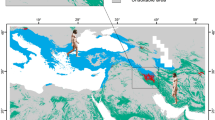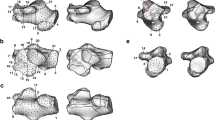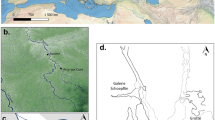Abstract
IT is probable that some readers may fail to appreciate Prof. Klaatsch's “New Theory of the Descent of Man” at its proper worth owing to the technical terms and obscure descriptions used in the account published in NATURE of November 24 (p. 118). The theory is simply this. The Neanderthal man and the gorilla have continuous supraorbital ridges and similar markings for the insertion of muscles on their skeletons; the Aurignac man (who could pass as a fairly high type of modern humanity) has not a continuous supraorbital ridge, in which he presents a very superficial resemblance to the orang, and has certain muscular impressions on his skeleton somewhat similar to the orang's.
This is a preview of subscription content, access via your institution
Access options
Subscribe to this journal
Receive 51 print issues and online access
$199.00 per year
only $3.90 per issue
Buy this article
- Purchase on SpringerLink
- Instant access to full article PDF
Prices may be subject to local taxes which are calculated during checkout
Similar content being viewed by others
Author information
Authors and Affiliations
Rights and permissions
About this article
Cite this article
KEITH, A. A New Theory of the Descent of Man. Nature 85, 206 (1910). https://doi.org/10.1038/085206b0
Issue date:
DOI: https://doi.org/10.1038/085206b0



